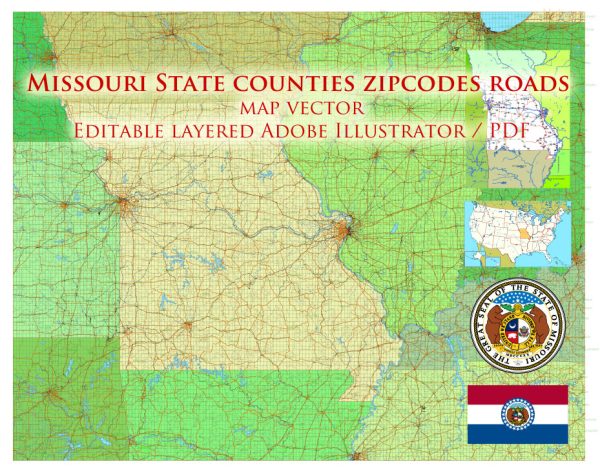Missouri’s urban development is a rich tapestry woven with historical, economic, and social threads. The state has experienced significant urbanization, with its cities evolving in response to factors such as transportation, industry, and population growth. While I can provide a general overview, keep in mind that the specifics can vary across different regions and cities within the state.
- Early Settlement and Trading Posts:
- Missouri’s history of urban development can be traced back to the early 18th century when French explorers and traders established settlements and trading posts along the Mississippi and Missouri Rivers.
- St. Louis, founded in 1764, played a pivotal role as a trading hub and gateway to the West.
- Westward Expansion and Transportation:
- With the Louisiana Purchase in 1803, Missouri became a gateway to the West for pioneers and settlers.
- The development of the steamboat and later the railroad in the 19th century enhanced transportation networks, contributing to the growth of urban centers like St. Louis and Kansas City.
- Industrialization and Economic Growth:
- The late 19th and early 20th centuries witnessed significant industrialization in Missouri’s urban areas, particularly in St. Louis. Industries such as manufacturing, brewing, and transportation flourished.
- St. Louis became a major industrial and economic hub, attracting a diverse population.
- Suburbanization and Post-War Boom:
- Like many other states, Missouri experienced suburbanization in the post-World War II era. The availability of automobiles and improved infrastructure led to the growth of suburban communities around major cities.
- The 1950s and 1960s saw significant population growth and the expansion of residential areas, changing the landscape of urban development.
- Urban Challenges and Revitalization:
- In the latter half of the 20th century, many industrial cities faced economic challenges, and some neighborhoods experienced decline.
- Urban revitalization efforts began in the late 20th century and continued into the 21st century. Cities invested in infrastructure, cultural amenities, and efforts to attract businesses and residents.
- Cultural and Educational Institutions:
- Cities like St. Louis and Kansas City are home to vibrant cultural and educational institutions. Museums, universities, and other cultural amenities contribute to the overall character and appeal of urban areas.
- Modern Urban Dynamics:
- Today, Missouri’s urban areas continue to evolve, adapting to changing economic trends, technological advancements, and demographic shifts.
- Sustainable development, mixed-use planning, and the preservation of historical architecture are often key considerations in modern urban planning.
- Transportation and Connectivity:
- Ongoing developments in transportation, including highway expansions and public transit initiatives, shape the accessibility and connectivity of Missouri’s urban centers.
In summary, Missouri’s urban development reflects a dynamic interplay of historical events, economic forces, and social changes. From its early days as a trading post to its present as a diverse and interconnected network of urban areas, the state’s cities have played a crucial role in shaping the broader narrative of American history and development.


 Author: Kirill Shrayber, Ph.D.
Author: Kirill Shrayber, Ph.D.